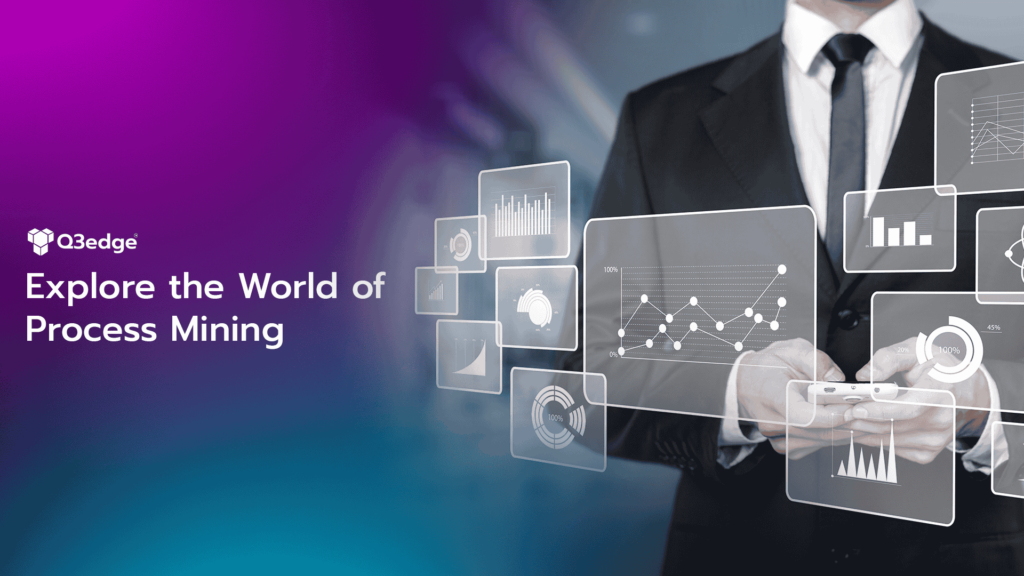Your First Steps into the World of Process Mining: Unveiling the Path to Business Optimization

In the fast-paced world of business, the key to success isn’t just about what you achieve—it’s about understanding how you got there. This is where world of process mining enters the scene, shedding light on the inner workings of your operations. In a world constantly driven by efficiency, speed, and innovation, process mining offers a game-changing approach to uncovering bottlenecks, enhancing workflows, and, ultimately, driving growth.
In this blog post, we’ll take you on a journey into the core of process mining, exploring its potential to revolutionize how businesses operate, optimize, and grow. You’ll also find a link to an insightful eBook on Process Mining at the end of this post to further deepen your understanding.
What is Process Mining, and Why Should You Care?
At its essence, process mining is all about digging into the operational data that already exists within your business. It’s not a new concept—businesses have long sought ways to improve their operations by analyzing processes. What’s new is the advanced technology that enables companies to go far beyond manual process improvements. Think of it like upgrading from a horse to a plane: we used to make small, manual adjustments to processes, but now, process mining can entirely redesign how we build the plane to maximize efficiency.
Whether you’re in manufacturing, retail, or finance, your business revolves around processes. Orders are placed, services are delivered, invoices are issued, and payments are received. All these steps generate valuable data that can be used to optimize your business operations.
The Evolution of Process Mining
Process mining isn’t just about improving current workflows—it’s about understanding the “why” and “how” behind your operations. It leverages data pulled from your enterprise systems, like SAP or Oracle, and identifies inefficiencies, bottlenecks, or missed opportunities.
For instance, imagine a factory where work is slowed down because supplies are too far from the assembly line. With process mining, you can analyze the data to identify the problem and suggest an improvement, such as moving materials closer to the workers. This analogy extends to complex business processes as well, where automation, AI, and big data analysis come together to refine every aspect of operations.
The Data Behind the Magic
A common challenge businesses face is accessing the right data. The good news is that process mining can work with almost any business, regardless of size. Many organizations run on ERP systems and have plenty of data to work with—it’s just about knowing how to use it.
Time-stamped event logs are the backbone of process mining. These logs show when an event occurs (like a truck arriving at a warehouse), allowing businesses to visualize their workflows. Once you have this data, mining helps you figure out the golden nuggets—the key areas to improve that will have the most significant impact on your efficiency and bottom line.
The Five Keys to Process Mining
So, how does process mining really work? Here are the five crucial steps:
- See It: Start by collecting the data. It could be as simple as time-stamped logs from your daily operations. These logs will paint a picture of how your processes are actually running.
- Understand It: Once you have the data, process mining tools help you make sense of it. Maybe there’s a recurring delay in shipping times, or you’re noticing some other inefficiency. Understanding these insights is the first step toward improvement.
- Fix It: Armed with knowledge, you can now make data-driven improvements to your processes. For example, if you find that moving a workbench closer to the action speeds up production, you can implement that change company-wide.
- Run It: Process mining isn’t a one-and-done solution. After implementing changes, you continue to monitor the results. Are your new workflows being adopted? Are they delivering the efficiency gains you expected?
- Check It: Finally, you need to ensure everything runs smoothly in the long term. Process mining platforms can automatically flag issues as they arise, allowing you to continuously refine and improve your operations.
Benefits of Implementing Process Mining
- Increased Efficiency: By identifying redundancies and streamlining workflows, companies can reduce operational costs and improve service delivery.
- Better Customer Experience: Enhanced processes lead to faster response times and improved service quality, which can significantly boost customer satisfaction and retention.
- Data Utilization: Many organizations struggle with underutilizing their data. Process mining helps unlock the value of existing data by providing actionable insights that drive business decisions.
The Power of World of Process Mining in Action
Imagine being able to see exactly where your business operations slow down, analyze why it’s happening, and then make the necessary changes to fix the problem. That’s the power of mining.
Companies like Blue Whale LTD have already embraced this technology, and the results speak for themselves. By leveraging mining, Blue Whale LTD was able to streamline operations, cut costs, and significantly increase their productivity. And they’re not alone—businesses worldwide are using process mining to unlock new levels of growth.
As businesses continue to adapt to an ever-changing landscape, mining offers a clear path to sustained improvement. By tapping into the data you already have, you can identify inefficiencies, improve workflows, and ultimately drive profitability. Ready to take the next step? Download the full eBook on Process Mining to dive deeper into the potential of this groundbreaking technology.
Unlock the secrets within your data and transform your business from the inside out.
